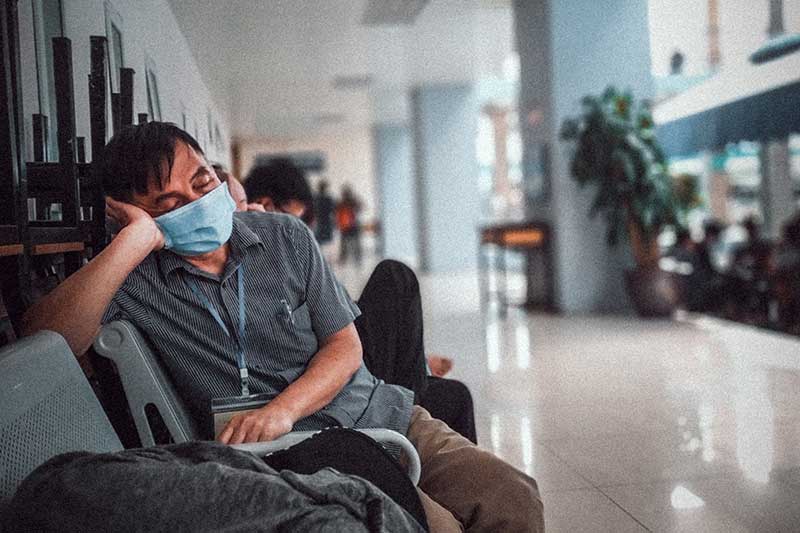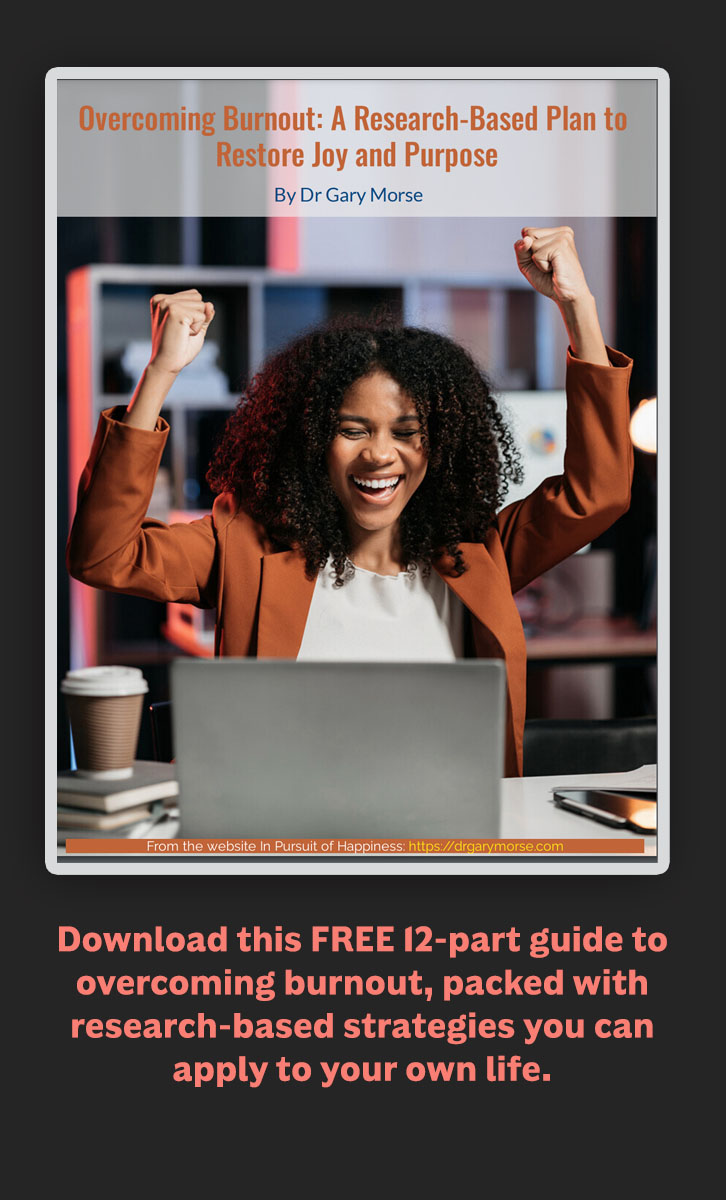We long for the experience of feeling truly alive—to feel “the rapture of being alive,” as Joseph Campbell told Bill Moyers in the classic PBS documentary, “The Power of Myth.”
Campbell’s words resonate for me, as they have for millions of people. We know from our experiences the intense feeling of being truly alive: passionate, acutely aware, connected, joyful.
And yet feeling truly alive is not easy to experience, especially these days. The 2020s have been rife with stresses and hardships, none more so for billions of people than the coronavirus pandemic.
As news reports remind us, the physical health effects of the virus have been catastrophic. In the first two years of the pandemic, 935,000 people have died and 78 million people infected in the United States (with 5.9 million deaths and 430 million cases globally by late February).
The Emotional Toll of the Pandemic
Meanwhile, the toll of the coronavirus pandemic has also been devastating on the mental health and well-being of people.
Some researchers called the escalating mental health problems as “the second pandemic wave.” Studies have shown rising mental health disorders and alcohol and drug use during the pandemic. In addition, happiness has fallen and burnout has increased.
The emotional toll of the pandemic goes far beyond diagnosable mental health disorders, however, encompassing a wide range of distressing feelings. These emotional reactions can be considered as normal human responses to the multiple stressors of the coronavirus pandemic.
What are those common emotional reactions?
5 Common Disturbing Emotions
Although reactions are individualized and often complex, common, significant emotions triggered by the pandemic include:
1. Fear—and we can include its close cousins, worry and anxiety. Fear and worry rise from a number of stressors, including fears about oneself—or loved ones—getting sick or even dying from COVID. Other worries have concerned losing one’s job, money, or house during the difficult economic times triggered by the pandemic.
2. Sadness. We have all suffered losses caused by the pandemic. The most serious of these are the deaths of loved ones. In addition, many have lost their good health, especially with the symptoms of long COVID, or suffered financially. And although people are often reluctant to acknowledge these losses—they appear minor in comparison to the death of a loved one—we have all experienced losses in the ways we used to live before the pandemic. Examples of these losses are numerous but include the inability to travel for a vacation we have long dreamed of, to celebrate a wedding with hundreds of family and friends, to socialize with friends whose company is precious. Countless social activities—some of which will never pass this way again—were cancelled during the pandemic.
3. Loneliness and Isolation. Pandemic precautions and restrictions have helped reduce infections but they have come at the cost of narrowing our social circles and the support we receive from others. The use of technology, like Zoom and FaceTime, are helpful but they do not fully satisfy our longings for being in the presence of others.
4. Anger and Frustration. Prolonged stress often induces frustration and anger, and we have all lived within the slow pressure cooker of the pandemic. Loss and fear also trigger frustration and anger. The anti-masking and anti-vaccine movement represents in part an angry lashing out against the loss of some personal freedoms—and a venting about the enduring pandemic. Frustration is also mounting as the pandemic continues.
5. Languishing. As the pandemic has gone on and on, longer than most people expected, many people have passed from an acute reaction of fear to a long-term reaction of languishing. Sociologist Corey Keyes first described languishing twenty years ago to describe a middle group of people who were neither clinically depressed nor thriving in the world. Rather, he wrote, millions of people were living lives “of quiet despair” that were marked by emptiness and stagnation. Languishing is also reflected in some common pandemic behaviors, including a lack of exercise, overeating (causing “pandemic pounds”), and letting one’s appearance slide when staying at home—behaviors which can all contribute to sagging self-esteem. Languishing is not depression (though it is a risk factor for later developing depression). But it is a state of being that is characterized by a lack of joy, a restlessness, a malaise—a sense of going through the motions of the day without zest or great purpose. As other writers such as Adam Grant and recent studies indicate, languishing is mounting as the pandemic wears on. We can think of languishing as part of the emotional fatigue that has been triggered by the pandemic.

The future of the pandemic?
So, what will happen with the pandemic in the weeks and months ahead?
Predictions are mixed. Two years after the initial spread of COVID to the United States, we are at a moment of rising expectations and renewed optimism. Finally, it seems, we are emerging from the pandemic.
Some of this optimism is based on facts. Infections, hospitalizations, and deaths are decreasing significantly as the omicron surge recedes. Hundreds of millions of people are now vaccinated and medical treatments have advanced.
But some of our optimism is based on fatigue, frustration, and hopeful thinking.
Vaccination rates are still short of what epidemiologists believe is necessary for herd immunity in the United States. Tens of millions of people remain hesitant or opposed to the vaccines, hamstringing the herd from collective immunity. Further, billions of people across the world remain unvaccinated, especially in poor nations where the vaccine distribution lags behind the need.
And although infection and death rates are declining, the absolute numbers still remain disturbingly high (over 1600 deaths daily in the United States by late February 2022).
Low vaccination rates increase the chances that COVID will surge again, especially if new mutations or variants emerge, just like it did with the Delta and the Omicron variants.
So, uncertainty still hovers about the future of the pandemic.
Still, we are a much better place than we have been. And we can do our part to fight the pandemic by getting vaccinated and boosted and supporting an adequate distribution of vaccines to poor nations.
What is clear, however, is that no matter the exact future course of the pandemic, we can cope with the emotional stresses. Basic self-care strategies including adequate sleep, nutrition, and exercise help with stress. So do wellness practices like meditation and mindfulness, and cognitive-behavioral strategies help to combat worrying.
In addition, here’s seven more strategies we can take to reclaim our ability to live fully and well.
Seven Steps to Recover Emotionally
1. Practice awareness and acceptance. Our awareness is needed not only for the environment—e.g., what is happening currently with the coronavirus spread?—but also especially for our inner state: what are we feeling? Directing our consciousness to be aware of our inner emotional state is an important first step toward improved well-being, especially when we couple it with an attitude of acceptance: We are feeling whatever we are feeling, at least right now. Probably millions of other people have had similar feelings as you do.
Naming the feeling also helps increase our awareness while also helping us to disentangle the feeling from our deeper, inner self. That is, we are experiencing an emotion, but we are not that emotion. The feeling does not define our identity.
As we practice awareness and acceptance, we are better able to let feelings go, rather than to obsess over them. Many distressing feelings pass on their own accord, much like storm clouds float across the sky.
2. Take control. Although many things are beyond our reach, we do have control over some important matters affecting our well-being. Examples are innumerable, but essential ones during the pandemic include reducing our risk of coronavirus infection and especially severe illness or death by getting vaccinated and boosted.
Further, we can claim control over how we live our lives in many ways. For example, we can choose to take calculated risks to go places and to do things that we long for that had been off the table during the worst periods of the pandemic. We can also live well emotionally, as the remainder of the following steps suggest.
3. Celebrate Positives. To recover, we also need to turn our attention away from negative thoughts toward positive ones. A simple exercise to do, promoted by Dr. Martin Seligman, is to identify and jot down three positive events (or behaviors) that occurred that day. Write down what strikes you—e.g., making good progress on a work project, your child getting their homework done, a beautiful sunset. This practice can retrain our minds from a flight-or-fight survival mentality to witnessing and savoring the positives of daily life, which often pass by largely ignored. (See the Three Good Things handout in the Resources page for a worksheet.)
In addition, you can identify positives about yourself. You have endured one of the most difficult periods in modern history. Doing so is a testament to your strengths and resilience. These are qualities that can also enable you to survive and to grow through future challenges.
What strengths, skills, resources of yours allowed you to endure the pandemic? Can you identify how you can use these resources to face and overcome future challenges?
4. Create Connection. The pandemic caused widespread disruptions in our social connections, diminishing social support and often leading to isolation and loneliness. Social support can be a boon to our mental and physical health and happiness. But you may have to consciously recreate social connections that suffered or even disappeared over the pandemic.

Photo: Zoe, Unsplash.com
One simple step to take in rebuilding social connections is to take a few moments and brainstorm your answer to this question: Who are the people who help you to feel positive and happy when you are with them? List at least two and up to seven people, and then beside each name, list how much time you now spend with them. Brainstorm then multiple ways you can spend more time together (this can include activities like having a meal together or hiking or even connecting virtually for conversation over FaceTime or Zoom). Pick then at least one or two people you will reach out to this week and an activity that you can share. (For a simple worksheet, see the “Gathering and using positive social support” handout on the Resources page).
5. Cultivate Compassion and Kindness. One of the positive reminders we can take out of the morass of suffering and stress from the pandemic is our interconnectedness. The biological and social facets of this truth were revealed in the rapid global spread of the coronavirus, which went from one small area in China to every region of the globe, infecting millions of people in the process.
Your health and well-being are closely connected with that of a multitude of people of all walks of life. We are all in this together.
Moreover, the stress and disturbing emotions you have experienced during the pandemic have also been felt by hundreds of millions of other people. We can affirm our interconnectedness and shared humanity by feeling compassion for the struggles, stresses, and difficulties of other people. Many of these experiences are more similar than different than those in our own lives.
We can also show our compassion and caring for other people by acting kindly. The number of ways we can show kindness is unlimited, and includes small, simple acts such as showing a smile, bringing someone a cup of coffee, listening to another person’s feelings, doing an errand.
At a societal and global level, we can also practice kindness and compassion by getting vaccinated and boosted, as that appears to be the only sure way to overcome the pandemic and end the spread of COVID.
6. Rekindle Joy. When fear, anger, and languishing overtake us, they not only affect our mood but they often rob us of feeling joy.
But we can recover our ability to reexperience joy. Doing so will be aided by conscious efforts.

Photo: Ivana Cajin, Unsplash.com
Sometimes rebooting our joy starts as simply as remembering what used to bring us happiness and good feelings in the pre-pandemic days. The pandemic disrupted our lives in myriad ways, including by throwing our happiness habits off-kilter. So sometimes we can reclaim our joy by simply re-engaging in the activities that used to bring us happiness but that fell by the pandemic wayside.
We can also experiment with new activities. As we try out new activities, we should pay close attention to glimmers of good feeling that appear, and then follow those seeds of happiness by expanding and repeating the actions, similar to the process Joseph Campbell called, “following your bliss.”
To do so may at times require a bit of a gentle self-nudge. In this era, people often say, “I’m not feeling it,” to avoid initiating a behavior. However, psychological research on behavioral activation demonstrates that feelings often follow rather than motivate a behavior. To feel different, to feel more joy, we may need to first act. And then we find we have created the feeling of joy as a consequence of our actions.
7. Find and Create Meaning. COVID illuminates fundamental though difficult existential truths: life is fragile, we are vulnerable, and death can occur unexpectedly. These are facts of life that we often try not to think about, but recognizing these existential realities can enhance the meaning and richness of your life. In particular, knowing that life is limited and fragile can help us sharpen our focus to what matters most. Two related questions can help us find and create meaning:
- What is important—what (and whom) is precious to you? Often we get stressed, we get busy, and we forget who and what is important. Gratitude practices, which enable us to consciously appreciate aspects of our lives, have been shown by multiple research studies to improve mental and physical health and happiness.

Photo: Nathan Dumlao, Unsplash.com
There are different ways to engage in gratitude practices but a simple and effective way is to take a few minutes each day to jot down three “things”—people, events, actions, etc.—for which you are grateful.
A helpful twist on this practice is to write each day about something new that you have not listed previously. A simple way to ensure you do it each day is by embedding this practice into a routine you do right now . For example, when you are brushing your teeth before bed, use that time to practice gratitude.
This variation will help you to move away from the generalities of life that we tend to think about (e.g., grateful that we have a job, or gratitude for our family). Instead, you learn to think about your life much more specifically in real time—including, for example, the help you got from a coworker on a project, your spouse preparing dinner and doing the dishes that evening when you are so tired, or your child kissing you on the cheek at bedtime. (For a simple worksheet, worksheet, please see the “Gratitude Journal” in the Resources page.)
- What do you want to do in your life? Life is limited and you cannot do everything in life. But you can spend time and energy on the things that are most important and meaningful. The question can direct your attention to major decisions, like the choice of a career.The question is equally relevant on micro-level: what do you want to do this day? Right now? The question of what is important can help create a sense of priority out of the onslaught of work tasks on a given day.It can also help us decide how we want to spend our time in the evening or weekend: Do we want to watch TV or go for a hike? Take our children and dog to the park or check our work emails? There are not absolute right or wrong answers.
Only an opportunity to focus our lives on what is most important.
Next Steps
The seven strategies described above can help you recover from the stresses and emotional toll of the pandemic. Best of all, perhaps, they can be building blocks for new growth, for thriving.
Getting started is not always easy, however.
One way to move forward is to focus trying out on one of the seven steps each day of the week. Or, if that paces seems too rapid, pick one strategy and try it for a week. For the following week, add a new strategy, and so forth.
You can also help yourself to do things differently by other simple actions, like putting a reminder note on your calendar, or voicing your intention to a trusted friends or loved one and asking for their support.
Learning new skills and habits often takes additional time and practice, but the seven strategies can be helpful steps in your journey for living well emotionally.
Along the way, you will be in a better position for feeling more peace, joy, meaning—for feeling truly alive.
An experience we all long for.
And one that you deserve.
Top Photo: Toa Heftiba, Unsplash.com



Thanks, Gary! Just articulating what we’ve all been thru is a great step forward. Your thoughtfulness inspires me — as always. I really needed this.
Thanks Dennis for your kind comments. And I appreciate all of the caring service you and the St. Vincent DePaul parish provide to so many.